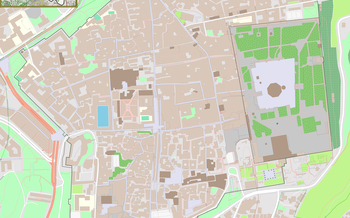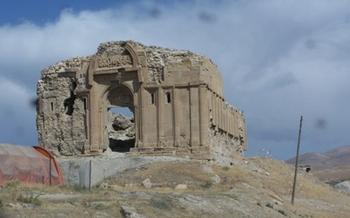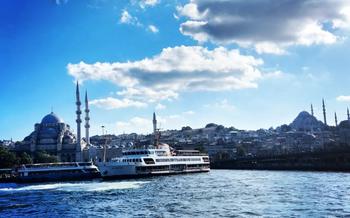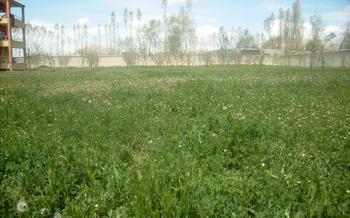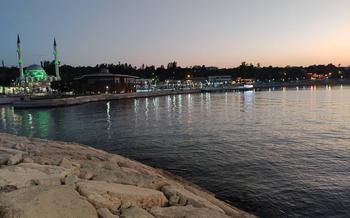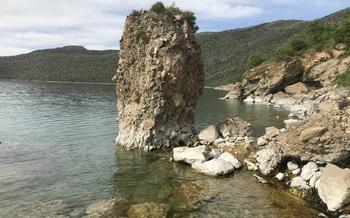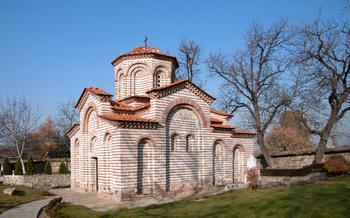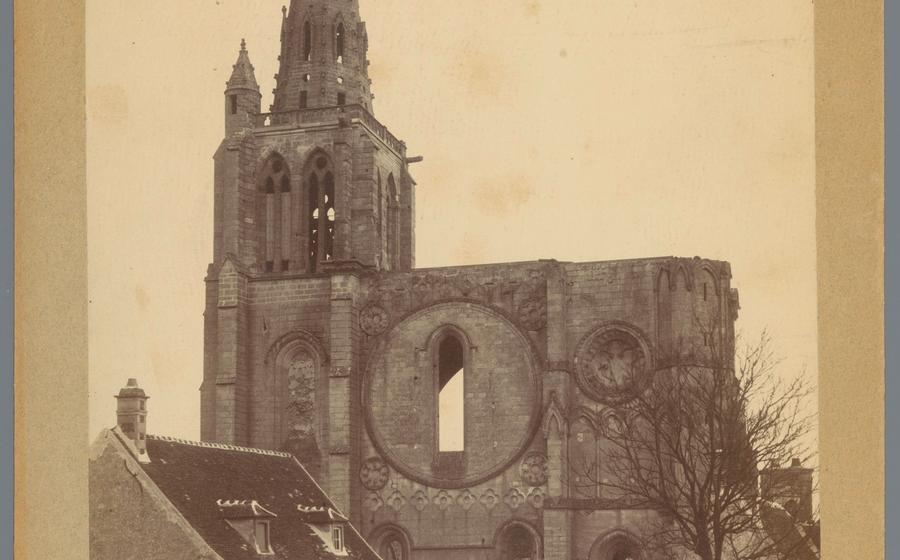
Saint Thomas Monastery
- Van's Religious History
- Location and Accessibility
- Architectural Highlights
- Historical Significance
- Religious Symbolism
- Excavations and Discoveries
- Restoration and Preservation Efforts
- Monastery Grounds and Surroundings
- Local Cuisine and Hospitality
- Cultural Events and Festivals
- Local Customs and Traditions
- Accommodation and Lodging
- Photography and Videography
- Guided Tours and Local Experts
- Insider tip: Discover hidden treasures and local secrets
Van's Religious History
Van, a city nestled in eastern Turkey, holds a rich religious history, with Christianity playing a significant role in shaping its cultural heritage. During the early centuries of Christianity, the city served as a vital center for the spread of the faith, attracting missionaries and believers from across the region. Among the notable figures who contributed to Van's Christian legacy is Saint Thomas, one of the twelve apostles of Jesus Christ. According to tradition, Saint Thomas traveled to Van and established a monastery, leaving an indelible mark on the city's religious landscape.
The Saint Thomas Monastery, also known as the Sourp Tovmas Monastery, stands as a testament to this apostolic legacy. Built in the 10th century, the monastery holds immense significance for the local Christian community. Throughout its history, it has served as a place of worship, pilgrimage, and spiritual retreat, drawing visitors from far and wide. The monastery's enduring presence speaks to its role as a beacon of faith and a symbol of the deep-rooted Christian traditions that have flourished in Van for centuries.
Location and Accessibility
Saint Thomas Monastery is located in the village of Akdamar, which is situated on Akdamar Island, in Lake Van. The island is about 45 kilometers south of the city of Van. To get to Van, you can fly into Van Ferit Melen Airport (VAN), which is served by several domestic and international airlines. From the airport, you can take a taxi or bus to the city center.
Once in Van, you can take a boat tour to Akdamar Island. The boat tours typically depart from the Van Pier, which is located near the city center. The boat ride to the island takes about an hour. Once you arrive on the island, you can walk to the monastery, which is located a short distance from the pier.
When planning your visit to Saint Thomas Monastery, it's important to consider the weather and the time of year. The best time to visit is during the spring or fall, when the weather is mild and pleasant. The monastery is open to visitors from 8 am to 5 pm daily. It's also important to note that the monastery is closed on Mondays.
Architectural Highlights
The Saint Thomas Monastery stands out for its unique architectural features, a testament to the skill and artistry of its builders. The monastery's most striking feature is its intricate stone carvings, which adorn the exterior walls and depict various religious scenes and figures. These carvings not only enhance the monastery's visual appeal but also offer a glimpse into the beliefs and traditions of the Armenian community.
The monastery's design is a blend of Armenian and Byzantine architectural styles, evident in its domed roofs, arched doorways, and spacious interiors. The main church, the heart of the monastery, features a central dome supported by four massive pillars, creating a sense of grandeur and awe. The interior walls are adorned with frescoes and paintings that narrate biblical stories and depict the lives of saints, adding to the spiritual atmosphere of the monastery.
The Saint Thomas Monastery has played a significant role in the development of Armenian architecture. Its unique design and construction techniques have influenced other Armenian monasteries and churches in the region, contributing to the rich architectural heritage of Van.
Historical Significance
The Saint Thomas Monastery holds immense historical significance, not only for the Christian community in Van but also for the broader history of Christianity. Its roots date back to the early days of the faith, when Christian missionaries spread their teachings across the region. The monastery served as a refuge and a spiritual center for these missionaries, providing them with a safe haven to practice their beliefs.
Over the centuries, the monastery became a prominent pilgrimage site, attracting devout Christians from across the region. Pilgrims would flock to the monastery to seek blessings, pray for miracles, and venerate the relics of Saint Thomas. The monastery's reputation as a sacred place grew, and it became a symbol of the deep faith and devotion of the local Christian community.
In addition to its religious significance, the Saint Thomas Monastery also played a crucial role in the cultural and historical development of Van. It served as a center of learning and scholarship, where monks and scholars engaged in the study of theology, philosophy, and the arts. The monastery's library was renowned for its collection of ancient manuscripts and texts, which contributed to the preservation and transmission of knowledge throughout the region.
The monastery's architectural design and artwork also reflect its historical significance. The unique blend of Armenian and Byzantine styles showcases the region's rich cultural heritage, while the intricate carvings and frescoes depict biblical scenes and stories, providing a glimpse into the beliefs and traditions of the early Christian community.
Throughout history, the Saint Thomas Monastery has stood as a testament to the enduring power of faith and the resilience of the human spirit. Its historical significance continues to inspire and captivate visitors, making it a must-visit destination for anyone interested in the rich cultural and religious heritage of Van.
Religious Symbolism
The Saint Thomas Monastery is not merely a historical landmark; it is also a place of profound religious significance. Every aspect of the monastery's construction and design holds symbolic meaning. The orientation of the church, facing east, represents the rising sun and the rebirth of Jesus Christ. The intricate carvings and iconography found within the monastery depict biblical scenes and saints, serving as visual reminders of the Christian faith.
For the local community, the monastery holds deep spiritual significance. It is a place where they can connect with their religious heritage and seek solace and guidance. The monastery's serene atmosphere and beautiful surroundings foster a sense of peace and tranquility, making it an ideal place for prayer and meditation.
Excavations and Discoveries
Archaeological excavations conducted at the Saint Thomas Monastery have unearthed a wealth of artifacts and findings that have shed light on the monastery's rich history and significance. During these excavations, archaeologists discovered ancient manuscripts, religious relics, and architectural fragments that provide valuable insights into the monastery's past.
One of the most notable discoveries was a collection of beautifully preserved manuscripts dating back to the 10th century. These manuscripts contain religious texts, historical accounts, and illuminated illustrations that offer a glimpse into the intellectual and spiritual life of the monastery during its early years.
Another significant finding was the uncovering of a hidden chamber beneath the monastery's main altar. Within this chamber, archaeologists found a collection of sacred relics, including fragments of bones believed to belong to Saint Thomas himself. This discovery has further reinforced the monastery's status as a pilgrimage site and a place of great religious significance.
The excavations have also revealed architectural details and structural elements that provide clues about the monastery's construction and design. Archaeologists have uncovered intricate carvings, decorative motifs, and hidden passages that showcase the architectural prowess and artistry of the builders.
These discoveries have played a crucial role in enhancing our understanding of the Saint Thomas Monastery's history, its religious significance, and its architectural heritage. They have contributed to the preservation and appreciation of this important cultural and historical site.
Restoration and Preservation Efforts
The Saint Thomas Monastery has undergone several restoration and preservation initiatives to maintain its historical and cultural significance. Recognizing the importance of preserving this architectural gem, local authorities and organizations have collaborated to address the challenges posed by time and neglect.
One of the key challenges has been the monastery's structural integrity, as centuries of exposure to harsh weather conditions and seismic activity have taken their toll. Skilled artisans and architects have carefully restored damaged walls, reinforced foundations, and repaired intricate details to ensure the monastery's stability.
Preserving the monastery's unique artistic features has also been a priority. Skilled craftsmen have worked meticulously to restore intricate carvings, frescoes, and mosaics that adorn the monastery's interior and exterior. These artworks provide valuable insights into the monastery's rich history and cultural significance.
Furthermore, extensive archaeological excavations have been conducted at the monastery to uncover hidden treasures and gain a deeper understanding of its past. These excavations have revealed ancient artifacts, pottery, and inscriptions that shed light on the monastery's role in the region's religious and cultural development.
The restoration and preservation efforts at the Saint Thomas Monastery have been guided by a deep appreciation for its historical, cultural, and religious significance. These initiatives have ensured that future generations can continue to marvel at the beauty and grandeur of this Armenian architectural masterpiece.
Monastery Grounds and Surroundings
The Saint Thomas Monastery is situated amidst a breathtaking natural landscape that adds to its spiritual charm. Surrounded by rolling hills, lush greenery, and serene waters, the monastery exudes an aura of tranquility and serenity. The monastery grounds are meticulously maintained, with well-kept gardens and pathways that invite visitors to explore and reflect.
As you wander through the monastery grounds, you'll be captivated by the breathtaking views of the surrounding mountains and valleys. The fresh air, filled with the scent of pine trees and wildflowers, creates a rejuvenating atmosphere that soothes the soul. Take a moment to sit on one of the benches scattered throughout the grounds and soak in the tranquility of the surroundings.
For those seeking a more active experience, the monastery grounds offer a variety of hiking trails that lead through the picturesque landscapes. These trails provide an opportunity to immerse yourself in nature and connect with the spiritual essence of the monastery. Along the way, you may encounter hidden nooks and secluded spots that offer stunning views and a chance for quiet contemplation.
Whether you choose to stroll through the gardens, hike through the surrounding hills, or simply relax and take in the scenery, the monastery grounds offer a sanctuary for the soul and a chance to reconnect with nature's beauty and tranquility.
Local Cuisine and Hospitality
Van's culinary scene is a vibrant tapestry of flavors and traditions, reflecting the region's rich history and cultural diversity. As you explore the city and its surroundings, be sure to indulge in the local delicacies that have become synonymous with Van's hospitality.
One must-try dish is the Van kahvaltısı, a traditional breakfast spread that features an array of local cheeses, honey, clotted cream, and fresh bread. The cheeses, in particular, are a point of pride for the region, with varieties like Van otlu peyniri, made with wild herbs, and Van kaşarı, a semi-hard cheese similar to cheddar, gaining widespread recognition.
For a taste of Van's unique street food, try the murtuğa, a crispy pastry filled with a savory mixture of potatoes, onions, and herbs. These golden pockets of deliciousness are a popular snack among locals and visitors alike.
When it comes to dining experiences, Van offers a range of options to suit every taste and budget. From traditional Turkish restaurants serving up classic dishes like kebabs and pide to cozy cafes and modern eateries showcasing innovative fusion cuisine, there's something for everyone to enjoy.
To truly immerse yourself in the local culture, consider dining at a local guesthouse or hotel. These establishments often offer home-cooked meals prepared with fresh, seasonal ingredients, giving you a chance to sample authentic Van cuisine in a warm and welcoming environment.
Cultural Events and Festivals
Van is a vibrant city that celebrates its rich cultural heritage through various events and festivals throughout the year. These events offer a fantastic opportunity for visitors to immerse themselves in the local culture and traditions. One of the most significant events is the Van Festival, held annually in July. This festival showcases Van's diverse cultural heritage through music, dance, art, and traditional sports competitions. Visitors can witness traditional Kurdish, Armenian, and Turkish performances, sample local cuisine, and participate in various cultural activities.
Another notable event is the Van International Short Film Festival, held annually in September. This festival brings together filmmakers from around the world to showcase their short films. Visitors can enjoy screenings of award-winning short films, attend workshops and seminars, and interact with filmmakers and industry experts.
For those interested in history and archaeology, the Van International Archaeology Symposium is a must-attend event. Held annually in October, this symposium brings together archaeologists, historians, and scholars from around the world to discuss the latest research and discoveries related to Van's rich archaeological heritage.
These cultural events and festivals not only provide a platform for showcasing Van's cultural diversity but also serve as a bridge between the local community and visitors. By attending these events, visitors can gain a deeper understanding of Van's history, traditions, and contemporary culture.
Local Customs and Traditions
The Saint Thomas Monastery is a sacred place for the local Christian community, and it is important to respect their customs and traditions. When visiting the monastery, be sure to dress modestly and cover your shoulders and knees. It is also important to be respectful of the monks and other visitors, and to maintain a quiet and contemplative atmosphere.
Photography is allowed inside the monastery, but it is important to be respectful of the monks and other visitors. Avoid taking pictures of people without their permission, and be sure to turn off your flash when taking pictures inside the church.
If you are lucky enough to be visiting the monastery during a religious festival, be sure to take the opportunity to participate in the festivities. These festivals are a great way to learn more about the local culture and traditions, and to connect with the local community.
Accommodation and Lodging
When planning your trip to Saint Thomas Monastery, finding suitable accommodation is essential. Several options are available near the monastery, ranging from budget-friendly guesthouses to comfortable hotels.
For a truly immersive experience, consider staying in a local guesthouse. These guesthouses often offer a glimpse into the local lifestyle and culture, allowing you to interact with friendly hosts and fellow travelers. They typically provide basic amenities like comfortable beds, shared bathrooms, and sometimes traditional Turkish breakfasts.
If you prefer a more private and luxurious stay, several hotels are located within a short distance of the monastery. These hotels offer modern amenities, spacious rooms, and often stunning views of the surrounding landscape.
No matter your budget or preferences, finding comfortable and affordable accommodation near Saint Thomas Monastery is easy. Remember to book your stay well in advance, especially during peak tourist season, to secure the best rates and availability.
Photography and Videography
Saint Thomas Monastery is a visual masterpiece, offering countless opportunities for photography and videography enthusiasts. To capture the monastery's essence, plan your visit during the golden hours of dawn or dusk when the warm light casts a magical glow on the ancient stones. Utilize a tripod to stabilize your camera, enabling you to capture sharp, detailed shots. Experiment with different angles and perspectives to convey the monastery's grandeur and intricate architectural details.
While photography is encouraged, it's essential to be respectful and mindful of the sacred nature of the site. Refrain from using flash photography, as it can be disruptive to visitors and potentially damage the monastery's delicate artwork. Before recording any videos, seek permission from the monastery's caretakers or local authorities to ensure compliance with any regulations or restrictions. By following these guidelines, you can create stunning visual memories that will forever capture the beauty and spirituality of Saint Thomas Monastery.
Guided Tours and Local Experts
To truly delve into the rich history and significance of the Saint Thomas Monastery, consider hiring a local guide. These knowledgeable individuals can provide insights and anecdotes that bring the monastery's story to life. They can point out architectural details that you might otherwise miss and explain the symbolism behind the artwork and iconography. Local guides can also share stories about the monastery's role in the local community and its significance as a pilgrimage site.
When selecting a tour guide, look for reputable companies or organizations that have a good track record and are well-respected in the community. You can ask your hotel or hostel for recommendations, or check online review platforms. Once you've found a guide that you're comfortable with, be sure to communicate your interests and expectations clearly. This will help them tailor the tour to your specific needs and ensure that you have a truly memorable and enriching experience.
Some local guides may also offer specialized tours that focus on specific aspects of the monastery, such as its architecture, history, or religious significance. These tours are an excellent way to gain a deeper understanding of the monastery and its role in the region.
Insider tip: Discover hidden treasures and local secrets
As you explore Saint Thomas Monastery, keep an eye out for the intricate carvings adorning the walls of the main chapel. These carvings depict scenes from the Bible and the life of Saint Thomas, and they offer a glimpse into the rich artistic traditions of the Armenian community.
To truly immerse yourself in the local culture, consider venturing beyond the monastery grounds and visiting the nearby village of Akdamar. This charming village is home to a vibrant community of artisans and craftsmen, who specialize in traditional Armenian crafts such as pottery, weaving, and jewelry making. Engage with the locals, learn about their unique skills, and take home a one-of-a-kind souvenir to cherish your visit to Van.
